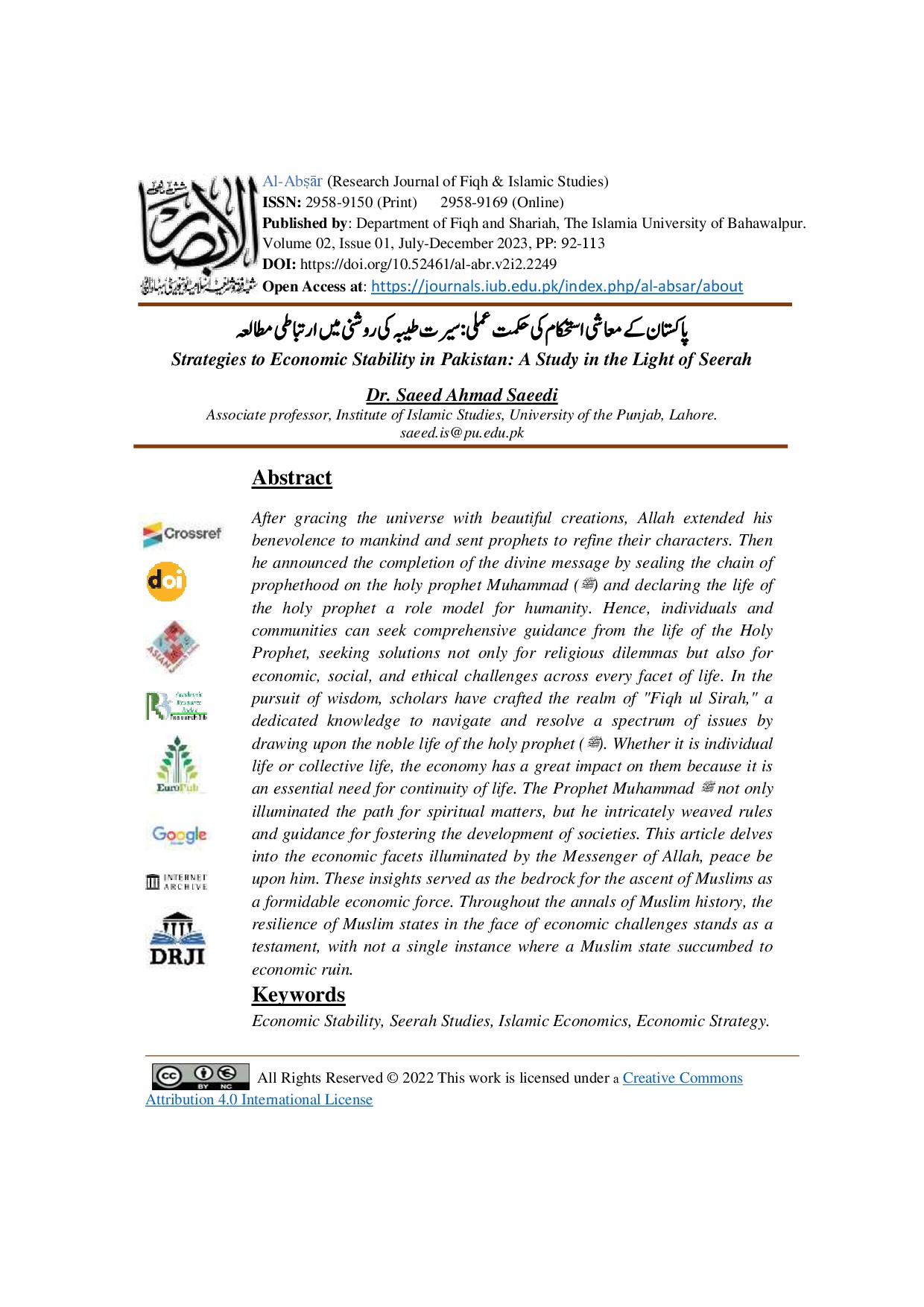Strategies to Economic Stability in Pakistan: A Study in the Light of Seerah
پاکستان کے معاشی استحکام کی حکمت عملی: سیرت طیبہ کی روشنی میں ارتباطی مطالعہ
DOI:
https://doi.org/10.52461/al-abr.v2i2.2249Abstract
After gracing the universe with beautiful creations, Allah extended his benevolence to mankind and sent prophets to refine their characters. Then he announced the completion of the divine message by sealing the chain of prophethood on the holy prophet Muhammad (peace be upon him) and declaring the life of the holy prophet a role model for humanity. Hence, individuals and communities can seek comprehensive guidance from the life of the Holy Prophet, seeking solutions not only for religious dilemmas but also for economic, social, and ethical challenges across every facet of life. In the pursuit of wisdom, scholars have crafted the realm of "Fiqh al-Sirah," a dedicated knowledge to navigate and resolve a spectrum of issues by drawing upon the noble life of the holy prophet (peace be upon him). Whether it is individual life or collective life, the economy has a great impact on them because it is an essential need for continuity of life. The Prophet Muhammad ﷺ not only illuminated the path for spiritual matters, but he intricately weaved rules and guidance for fostering the development of societies. This article delves into the economic facets illuminated by the Messenger of Allah, peace be upon him. These insights served as the bedrock for the ascent of Muslims as a formidable economic force. Throughout the annals of Muslim history, the resilience of Muslim states in the face of economic challenges stands as a testament, with not a single instance where a Muslim state succumbed to economic ruin.

Downloads
Published
How to Cite
Issue
Section
License
Copyright (c) 2023 Al-Abṣār (الابصار)

This work is licensed under a Creative Commons Attribution-NonCommercial 4.0 International License.





